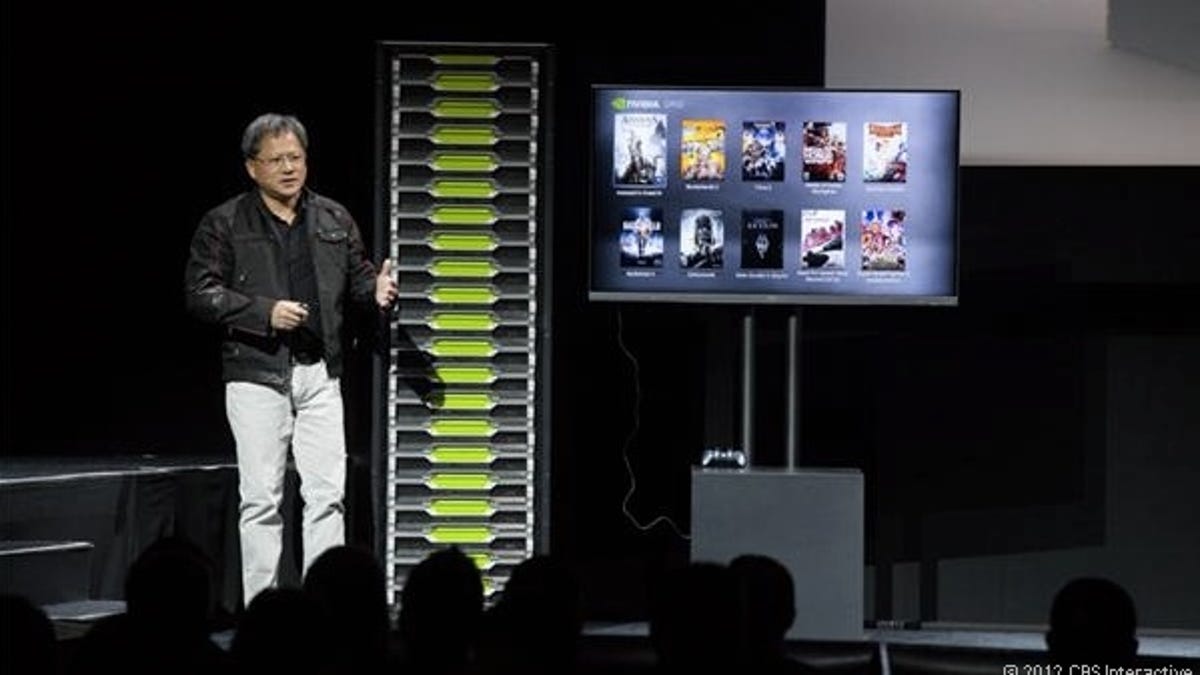Nvidia Grid pushes gaming to the cloud
An integrated cloud-computing device launches at CES 2013 and makes it possible to play 3D games in the cloud.

LAS VEGAS--Nvidia took the wraps off Nvidia Grid, the company's first fully integrated system to enable customers to access their games via the cloud.
Launched tonight at CES, Nvidia Grid pushes the limits of cloud gaming in a server stack that's designed to optimize computer graphics. In the works for five years, the stacks, which are packed full of GPUs, or graphics processing units, enable 3D gaming that can render graphics directly to the cloud.
The upshot is that you'll be able to start playing a game on one device, like a tablet, and pick it up where you left off on another, like your desktop.
Nvidia Grid, which is in a trial phase, will be sold to MSOs and partners.
Expanding into cloud computing with Grid isn't a big stretch for the company. While Nvidia is best known for providing high-end graphics for gamers, it also has made a push of late to offer GPUs for supercomputers. The most powerful supercomputer in the world, Titan, uses Nvidia's graphics along with AMD's CPUs. GPUs are used to accelerate the number-crunching functions of supercomputers by allowing many tasks to be completed at once, and they require less power than CPUs alone.
Meanwhile, cloud gaming also has been a big focus for Nvidia as the company seeks to expand its core gamer market.
The company said at its developer conference in May that it would begin offering technology that would allow its chips to be shared by multiple devices over the Internet. That marked the first time it talked about Grid, which it said would power games run through servers and streamed to computers and devices over the Internet at rapid speeds. At that time, Gaikai was announced as an early party for Grid. However, Gaikai, which has since been bought by Sony, wasn't mentioned during the CES press conference.
Updated at 1:40 a.m. PT with background information.



